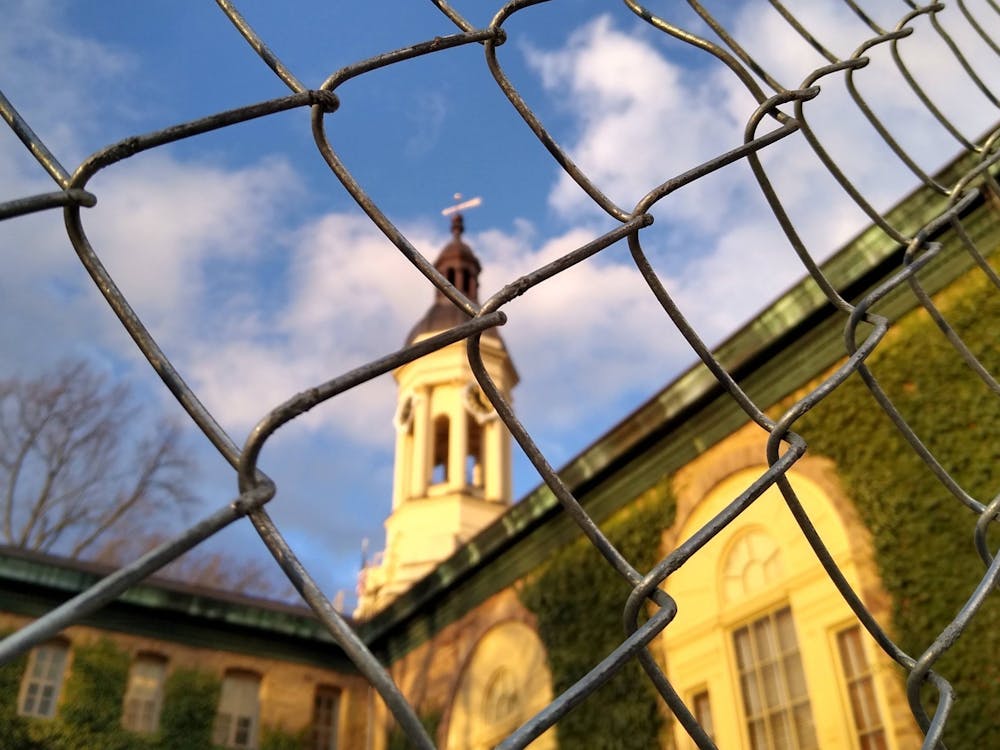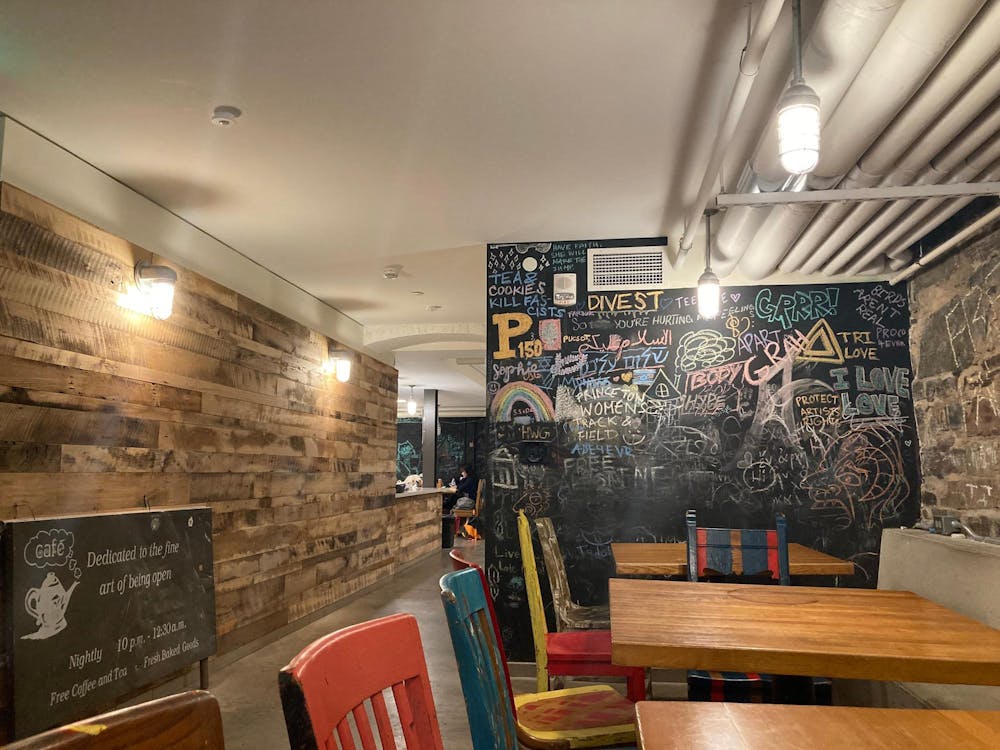On Monday, the University released draw times for the most conventional room draw since the beginning of the COVID-19 pandemic. This year will be the first under the University’s plan to fully implement a four-year residential college system, allowing upperclass students to live in residential college housing without purchasing a University meal plan. Further, this room draw cycle is the first to feature dorms in New College East (NCE) and New College West (NCW) — additions that present the University with an unprecedented housing lottery.
On the Undergraduate myHousing portal under the “Available Rooms” list, students may browse housing options. The list indicates that 15.2 percent of available rooms and 15.9 percent of available beds will be “immediately adjacent to a construction project” at the start of the 2022-23 academic year. By some measures, this is a dramatic undercount.
“The dorms that are highlighted on the ‘Available Rooms’ list are a prompt for students to understand that those dorms have rooms that are immediately adjacent to construction sites,” wrote Deputy University Spokesperson Michael Hotchkiss in an email to The Daily Princetonian. “These designated rooms have windows that open directly to construction sites and that will experience the highest impacts from construction.”
Other halls, while not considered “immediately adjacent,” will still experience disruptions from ongoing projects. For instance, buildings like Edwards Hall — directly across the street from the Art Museum construction site — or Yoseloff Hall — which will only be separated from the construction of Hobson College by a single walkway — are not designated “construction adjacent” by the “Available Rooms” list.
These classifications run contrary to a construction overview released by University Housing and Real Estate Services earlier this year. According to a graphic at the beginning of a presentation from the office, when considering the projects at Dillon Gym, the Art Museum, Hobson College, Whitman Lawn, Butler Temporary Dining Hall, and McCosh, some 53.6 percent of available rooms and 53.9 percent of available beds will be next to construction for some period of the next academic year.
The two construction assessments, from the “Available Rooms” list and the Housing Services, respectively, do not line up. When considering all locations that are assessed by either review to be “construction adjacent,” 59.2 percent of available rooms and 59.1 percent of available beds will be next to a campus renovation project.
This count opposes a claim made on the “Available Rooms” list, which states that “there is enough capacity for students to not have to select rooms that are immediately adjacent to construction sites.” In considering the construction indicated on this sheet, the assertion seems plausible. However, upon examining the expanded slate of construction-adjacent rooms, there is not enough space, by any metric, for all students to avoid the inconvenience.
The chart below shows every bed available in room draw, with each dot representing one bed. The column on the left indicates beds that are not near construction, while the column on the right indicates those that are “construction-adjacent” according to either the Housing Services presentation or the “Available Rooms” list. The chart is adjustable, and may be toggled to reorganize the beds by different factors.

The ‘Prince’ also analyzed which students entered each room draw.
One may enter a draw in a group of up to eight students, so long as all of the students are eligible for the draw in question. A first-year, for example, may draw in a group with a sophomore for that first-year’s assigned residential college. Some draws have other restrictive requirements. For example, a student is only eligible for a draw in Spelman or independent housing if at least half of their draw group pledges to be independent (not on a meal plan or in an eating club) for the entirety of the next academic year.
As in the past, first-years are only eligible to draw rooms from their assigned residential college.
First-year students formerly in First College will now live in New College West, and first-year students in New College East were chosen via a lottery system that occurred in February.
Upperclass students are not as confined: with every residential college accepting juniors and seniors, they may enter as many of the seven residential college draws as they please. With the added option of entering draws for upperclass, Spelman, and independent housing, sophomores and juniors could, theoretically, request a spot in 10 different room draws as a part of 10 different groups. One’s place in each draw is determined by a points system that considers class year and original residential college affiliation.
Despite the myriad of complications in entering various lotteries, draw group sizes generally remained consistent across all draws (excluding Spelman, where all groups must be either four or eight people).
A total of 3,459 undergraduates chose to participate in this year’s housing lottery, 86.6 percent of all undergraduates per the residential college facebook. Those who are not in the lottery may have received a room through the housing accommodations draw, may be serving as an RCA, may be living off campus or in an eating club, or may have simply forgotten to enter the lottery.
Of those 534 students who are not in the room draw, 73 are first-years, 158 are sophomores, and 303 are juniors.
Those who chose to remain in room draw often tried their luck in a number of the lotteries. On average, juniors entered 3.9 draws, sophomores entered 5.4 draws, and first-years, confined to their own residential college, all entered one draw. Twenty-six people entered all 10 draws: 11 juniors and 15 sophomores.
Among upperclass students, some residential room draws were more popular than others. New College West was the most popular option, attracting 1,548 students, while Forbes College was the least popular, bringing in just 622 students.
A number of additional factors complicate one’s housing process. All of the draws take place at different times and, to secure the space, one must sign a housing contract within fifteen minutes of selecting a room. While one may evaluate many different options, no individual can secure multiple accommodations. Furthermore, as one may enter different draws with different groups, many room draw groups eventually break up. If one’s group changes, the remaining members do not lose their draw time, but rather must proceed with the fractioned group.
Each residential college must reserve a set number of spaces for first-years and sophomores. While there is no limit to the number of upperclass students who may enter the draw for a given residential college, each college only has the capacity for a fraction of the sophomores and juniors on its room draw list. Spelman and independent housing face similar limitations, whereas upperclass housing has much larger hall capacities.
Different residential college draws may suit different students depending on their rooming preferences. Whitman College, for instance, has the most singles, whereas Rockefeller College has the fewest. Forbes, meanwhile, is the residential college with the most doubles and Mathey College is the only one with quints.
This year’s room draw, complicated by new colleges and construction projects which span the length of Elm Drive, presents students with a novel series of challenges and choices. The calculus of room selection, weighing location, square footage, and a litany of other factors, isn’t getting any easier.
All housing and draw data used in this analysis was sourced from the University Housing Portal on March 28th, before the start of room draw. Data on total enrollment by class year was sourced from the Residential College Facebook on the same date.
Sam Kagan is the Head Data Editor and a senior writer with experience reporting on university finances, alumni in government, university COVID-19 policy, and more. His projects, including the Frosh Survey, focus on numerical storytelling and data journalism. He previously served as a news editor. Sam can be reached at skagan@princeton.edu or on Twitter @thesamkagan.
Anika Maskara is a Head Web Design and Development Editor. She can be reached at amaskara@princeton.edu or on Instagram @anikamaskara.
Lia Opperman is an Assistant News Editor who often covers University affairs, student life, and local news. She can be reached at liaopperman@princeton.edu, on Instagram @liamariaaaa, or on Twitter @oppermanlia.









